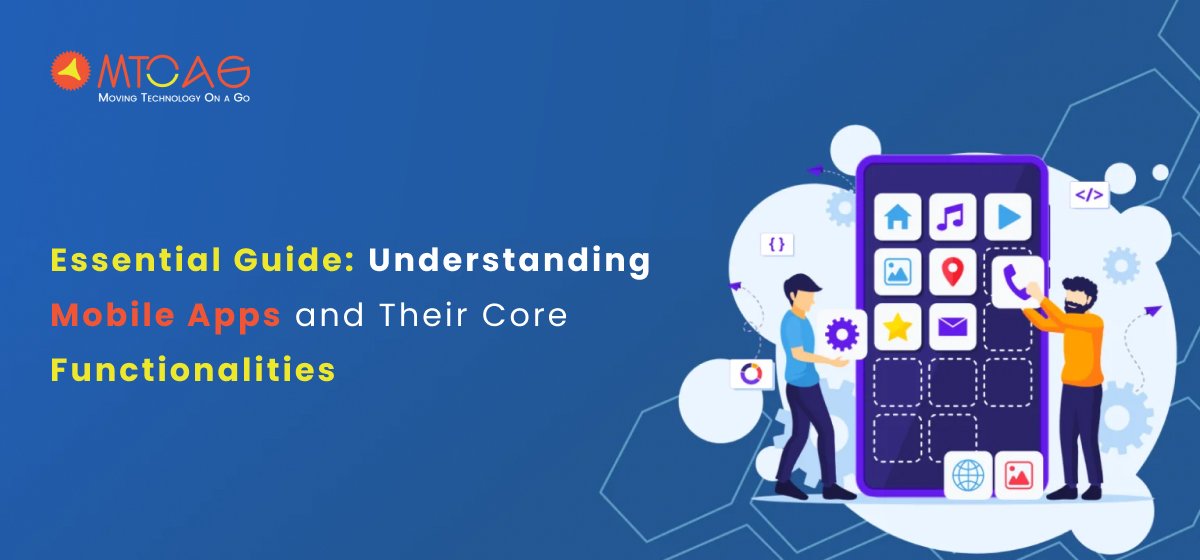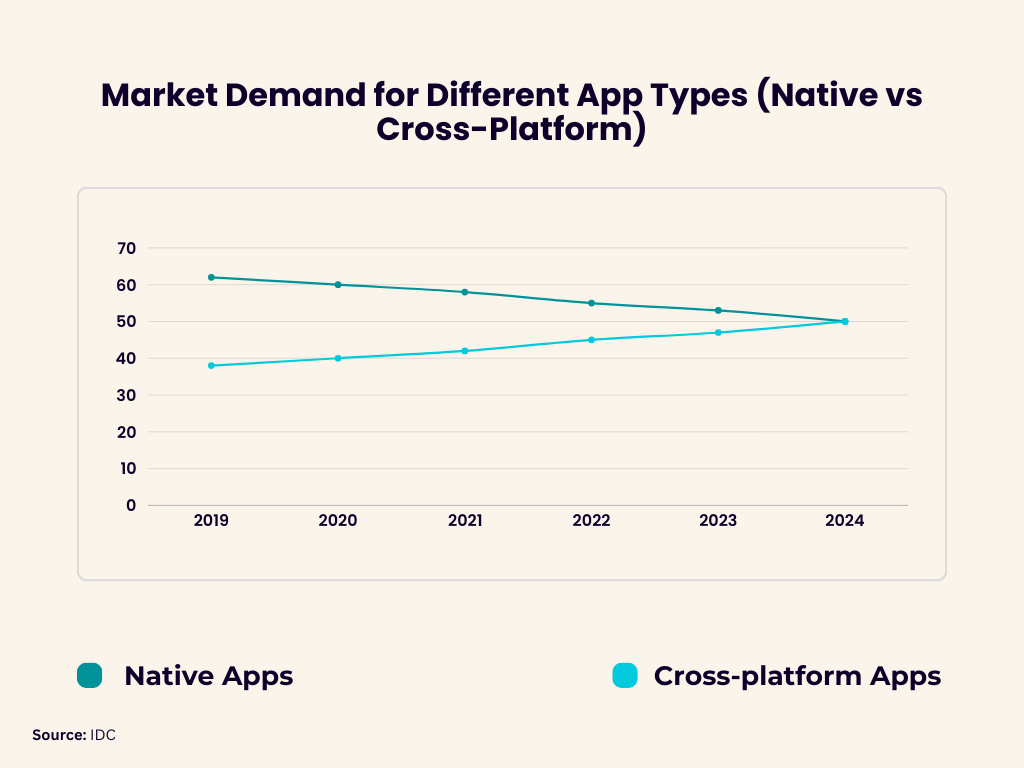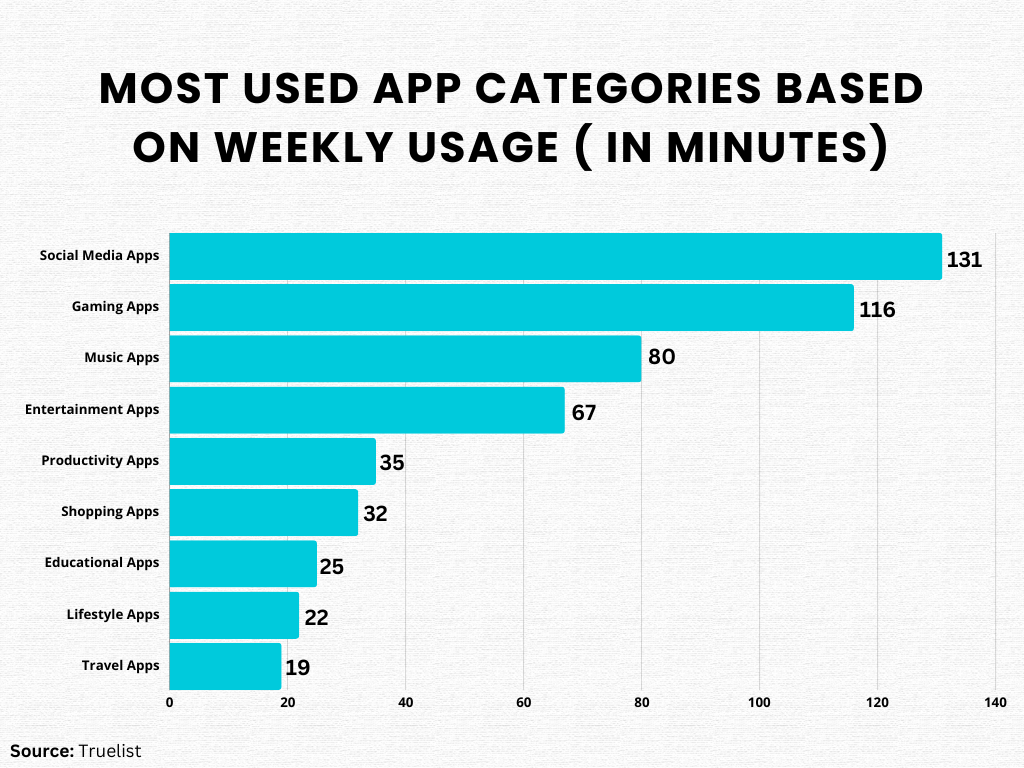2500+
Successful Projects
Table of Contents
You have surely heard the saying, “Smartphones are the future.” And believe us, they are indeed the future of everything. But wait, what’s making them so valuable and useful? The answer is mobile apps. Yes, you heard it right! Mobile apps are no less than a soul for these devices. Imagine using a smartphone without a single app; what can you do with it except for calls and messages? Nothing. Right!
From healthcare to e-commerce and gaming, every industry is expanding its dependency on mobile apps. And that’s the need of the hour, as suggested by recent studies and current statistics. According to a study, American adults spend an average of 4+ hours on mobile apps daily. In such a situation, there’s no excuse left for those who still think, ‘Do my business need a mobile app?’ 
So, if you’re a startup or a fully-fledged business feeling confused about your digital transformation, this guide will clear all your doubts about mobile app development. We will start with the basics of mobile apps, covering how they work, a deep insight into the mobile app industry, its importance for your business, app types and categories, and core features it should have before releasing. So, let’s get started!
A mobile application, often referred to as a mobile app, is a type of software application specifically developed to operate on handheld devices like smartphones or tablets. These apps can be downloaded via online marketplaces, commonly known as app stores or other online sources. They typically come with a variety of features and functionalities that are tailored for mobile usage.
Mobile applications are crafted to be straightforward and user-friendly, boasting interfaces that are effortlessly navigable using touch screens and other controls suitable for devices. The categories of apps vary from basic games to highly advanced solutions, depending on the intended users' requirements. Compared to conventional web-based applications, they provide several advantages, such as enhanced accessibility, superior performance, and the ability to function offline.
Mobile apps are developed using coding languages like Java, Objective-C, or Swift. They are designed for various operating systems, such as iOS, Android, and Windows. After the development phase, these apps need to be submitted to App Stores for review and distribution.
Once a user installs a mobile app, they can use its features and services even without internet connectivity. However, many apps depend on internet access to function optimally as they utilize cloud services for tasks like data storage and processing.
Mobile apps interact with backend servers and other external resources through Application Programming Interfaces (APIs). APIs facilitate the interaction between apps and other databases or web services, unlocking a plethora of functionalities. This includes integration with social media, processing payments, and accessing real-time data feeds.
Leveraging these technologies, mobile apps offer easy access to services and tools directly from our smartphones. You can use it for entertainment, booking travel, online shopping, productivity enhancement, or even as a business tool.

Investing in a mobile app can be a strategic decision for your business. The inspiring success stories of brands like Uber, Coca-Cola, Facebook, Nike, and Ikea through mobile apps aren’t hidden from anyone.
So, here are some potential benefits of mobile apps for businesses:
Mobile apps facilitate real-time interaction with customers by delivering personalized information and promotions. Tools like push notifications and location tracking enable you to send particular messages, deals, and alerts.
Possessing a mobile app boosts your brand's visibility and recognition. A well-crafted and functional app can foster positive connections with your brand and act as a continual reminder on users' devices.
Despite mobile apps' undeniable advantages, many small businesses have not yet embraced them. Investing in a mobile app can give you a substantial competitive edge and demonstrate your dedication to delivering top-notch service.
A mobile app ensures your business is accessible to customers at all times and from any location. This round-the-clock availability can significantly enhance customer interaction, sales, and customer satisfaction in today's fast-moving, on-demand economy.
Mobile apps offer valuable insights into customer behavior, preferences, and interactions with your brand. These analytics enable you to make informed decisions to enhance your operations, marketing, and customer service.
In addition, a mobile app can significantly increase your sales. Customers can easily browse and purchase your products or services anytime, anywhere, by providing a convenient and user-friendly platform. This ease of access can lead to a higher conversion rate, ultimately boosting your business's revenue.
Understanding the types of mobile apps is essential for businesses as it can help you set a budget for the development project and decide the key functionalities of your app. There are three main types: Native apps, Cross-platform apps, and Web apps. Let's delve into each of these.
Native mobile apps are designed to operate on a single mobile platform or operating system (OS). For instance, native apps developed for Google's Android OS are exclusive to Android devices. Similarly, an app native to Apple's iOS will only function on iPhones and iPads.
This exclusivity means native Android apps cannot run on iOS devices; conversely, native iOS apps cannot operate on Android devices.
Native App Technologies
App developers use various programming languages to create apps for specific operating systems. The most frequently used include:
Pros and Cons of Native Apps
Pros of Native Apps | Cons of Native Apps |
Superior performance speed | Native app programming languages can be complex |
Enhanced processing efficiency | Creating OS-exclusive apps can be time-consuming |
Seamless integration with the native device UI | Each specific platform requires a separate codebase |
Compatibility with mobile device features |
Examples of Native Apps
Cross-platform apps refer to mobile applications that are compatible with multiple systems, such as iOS, Android, and Windows. These applications are built using a single codebase, which results in significant savings in terms of time and resources during the development process.
These applications can run across multiple platforms, leverage reusable code, include native features, and be distributed via app stores. However, these apps may not be able to access all the platform's features, whereas native applications typically can.
Cross-platform Technologies
Pros and Cons of Cross-platform Apps
Pros of Cross-platform Apps | Cons of Cross-platform Apps |
They are simple to develop. | Complex functionalities may cause the app to lag. |
They are more cost-effective than native apps due to code sharing. | They are more expensive than web apps. |
Adding new features is simple as they utilize a single codebase. | They are not as interactive as native apps. |
They can function without an internet connection. | The apps cannot perform tasks specific to the operating system. |
They can be launched faster as the app can be developed for multiple operating systems simultaneously. |
Examples of Cross-platform Apps
Internet applications, also known as web apps, operate through a web browser and require an internet connection to function. They are versatile and can be accessed on various devices, such as desktop computers, smartphones, and tablets, without the need for installation.
One key feature of web apps is their adaptability. They are responsive and can adjust to fit any screen size, whether a computer, laptop, or mobile device.
Web Apps Technologies
Pros and Cons of Web Apps
Pros of Web Apps | Cons of Web Apps |
They are cost-effective and quick to develop and launch. | They are dependent on the web browser. |
They don't take up storage space on the device. | They require an internet connection to function. |
They are easy to update and maintain. | They may have limited functionalities compared to native apps. |
They can be accessed from any mobile browser. |
Examples of Web Apps
While mobile apps are divided into three broader types based on technology, they are categorized differently on online marketplaces based on their purpose. 
Here are some popular mobile app categories on Apple’s App Store and Google’s Play Store:
Gaming applications are one of the most demanded categories on the App Stores. They range from simple puzzles to fun-filled adventures. The gaming sector is massive and lucrative, offering both entertainment and significant profits for companies.
In 2022, the gaming industry amassed a whopping $184 billion, with mobile games accounting for $92 billion alone. It's projected that by 2027, the mobile gaming market will expand to $118.9 billion, according to Statista.
As of 2024, the global user base for social media stands at 5 billion, and it's anticipated to approach nearly six billion by 2027. Applications like Facebook, Instagram, and LinkedIn have become integral to people's daily internet usage.
On average, individuals spend 151 minutes per day on social media and messaging, a rise of 40 minutes since 2015. Users in Latin America lead the pack in terms of daily time spent on social media.
Entertainment applications, such as Netflix and YouTube, captivate users by offering countless hours of entertainment, including live streams, event searches, and interactive chats.
Instagram is another such app that merges social networking with entertainment. In 2022, Spotify emerged as the world's leading entertainment app, with 672 million downloads. Netflix and YouTube followed with 165 million and 154 million global downloads, respectively.
Shopping applications like Amazon and eBay have revolutionized the shopping experience, making it effortless right from your phone. They offer a comprehensive shopping experience at your fingertips, complete with easy browsing and secure payment options.
Mobile shopping apps provide convenience for shopping anytime, anywhere. A remarkable 60% of shoppers prefer mobile apps over websites on their phones due to a superior user experience, and 88% of consumers have at least one shopping app installed.
In 2023, Temu topped the charts as the most downloaded shopping app, with nearly 338 million downloads from the Apple App Store and Google Play.
These applications provide extensive song libraries, customized playlists, and even podcasts. Regardless of whether you're a fan of current chart-toppers or timeless classics, music apps ensure your preferred melodies are always at your fingertips.
According to recent research, over 50% of individuals aged between 16-24 use their phones for music streaming, and 64% of music streamers use a variety of devices, including smartphones, tablets, and computers.
These applications are like having a personal secretary on your device. They assist you in performing tasks ranging from sending emails to planning your day. Applications such as Microsoft Office, Slack, and Asana make it possible to work efficiently while on the move and maintain communication with your team.
In 2022, the global market for productivity applications was estimated to be worth $9,420.35 million. It is predicted to grow at an annual rate of 9.2%. By 2028, it is anticipated to reach a value of $15,971.55 million.
These are mobile apps designed to facilitate learning. For instance, apps like Duolingo that aid in learning new languages have seen a surge in usage. Apps that combine learning with gaming are particularly beneficial for children.
In 2022, the market for such educational apps reached a value of $7 billion, marking a 7.2% increase from the previous year. It's projected to continue growing at an annual rate of 8.9% until 2030.
These apps cater to personal hobbies and wellness. They offer a wide range of services, whether you're interested in keeping up with the latest trends, finding a new exercise regimen, or seeking relationship advice. These apps are designed to enrich and streamline various aspects of your daily life.
Popular apps in this category include Calm and Headspace for meditation and mindfulness, MyFitnessPal for monitoring health and fitness, and Tinder and Bumble for those seeking romantic connections.
These are applications that are so integral to our daily routines that we often don't even notice we're using them. Typically, utility apps have the shortest usage sessions - they're used to accomplish tasks quickly and efficiently. The most common types of these apps include barcode readers, tracking tools, and health-related apps.
The worldwide market for these utility apps was valued at $4.7 billion in 2021, and it's expected to grow at a compound annual growth rate (CAGR) of 7.5% from 2022 to 2028.
These apps simplify travel by transforming your smartphone or tablet into a personal tour guide, providing all the information you need about the places you're visiting. In 2021, the travel app market generated revenues of $556 billion, a 53.4% increase from the year before.
Developing a mobile app can be expensive, and frequent updates may incur additional costs. So, before you outsource your mobile app development project to anyone, it is essential to list all the core features your app should have before releasing it.
While other advanced features and functionalities can be added later based on user feedback, these fundamental features should be prioritized during the initial stages of development.
The core of any mobile application is its navigation menu, which seamlessly guides users across different sections. Users don’t like spending time on complex app interfaces, as it can lead to disinterest.
A well-structured menu enhances the user experience by offering direct paths to desired content. When crafting an app's features, it's crucial to use clear labels, a logical layout, simple language, and intuitive images. This approach simplifies navigation, minimizes user annoyance, and boosts user retention.
Long load times can cause significant frustration for users, especially if the app crashes or freezes. The bottom line is that if your app takes too long to load, users will likely abandon it in favor of faster alternatives.
Enhancing mobile app performance through effective coding practices, image size reduction, and efficient cookie management can lead to quicker load times, keeping users engaged and satisfied.
Understanding user behavior is crucial for refining app features and promoting growth. Built-in analytics offer key insights into user actions, preferences, and challenges, enabling developers to make informed decisions.
App designers can monitor visitor numbers and track online feedback to understand what's working and what's not. Analytical tools allow for enhanced functionality by adjusting app features to attract users and maximize engagement.
Internet connectivity isn't always reliable, especially in areas with weak network coverage or during travel. The best way to deal with such situations is to offer an "Offline Mode" so users don't have to worry about data restrictions.
Incorporating "Offline Mode" allows users to utilize features like data caching, local storage, and intelligent synchronization, ensuring seamless usability and boosting the app's dependability and user satisfaction.
AI technology has been integrated into mobile applications in various ways, including interactive chatbots, image editing tools, and digital assistants. These practical support channels, such as chatbots, alerts, app usage guides, or voice-activated bots, provide users with the ability to seek assistance or ask questions at their convenience.
Numerous in-app support utilities, like User Voice, HelpShift, and Instabug, offer users a communication channel with the app development team.
In today's world, protecting sensitive user information is paramount, as breaches of privacy can lead to severe consequences.
Mobile applications must establish rigorous data privacy policies and enforce robust security protocols to safeguard their users' sensitive information.
Several security features in mobile apps can build trust among users and foster their loyalty to the application.
The necessity for data synchronization across various devices is a critical feature for any user-friendly mobile application. Users often find it more challenging to access specific links on mobile devices than websites.
App features that enable synchronization across multiple devices can enhance the user experience and make the apps more accessible.
The market is filled with intriguing apps and ideas, but they become irrelevant if they drain the battery to the extent that the device's lifespan is compromised. Hence, it's crucial to consider strategies that extend battery life when developing solutions.
A seamless internet connection with extensive bandwidth is more of a fundamental need than a mere luxury today. The aftermath of the pandemic has undeniably escalated the demand for fast connectivity, particularly among professionals working remotely and young learners.
While we relish the rapid download speeds and enhanced streaming quality, 5G stands to revolutionize the existing landscape of mobile technology.
Typically, mobile device users interact with apps through actions like tapping and scrolling, usually while holding the phone in one hand.
However, voice-assistant apps are gaining significance, especially for those who cannot use their hands due to an accident, disability, or an overload of tasks. This technology is becoming an essential tool, providing accessibility and convenience to many.
As the mobile industry continues to expand, mobile apps are rapidly becoming a hot trend for businesses to connect with their customers and employees. These apps offer a handy, customized, and safe platform for accessing crucial data and carrying out tasks while on the move. If you want more comprehensive information on mobile app technology, read our mobile app development guide.